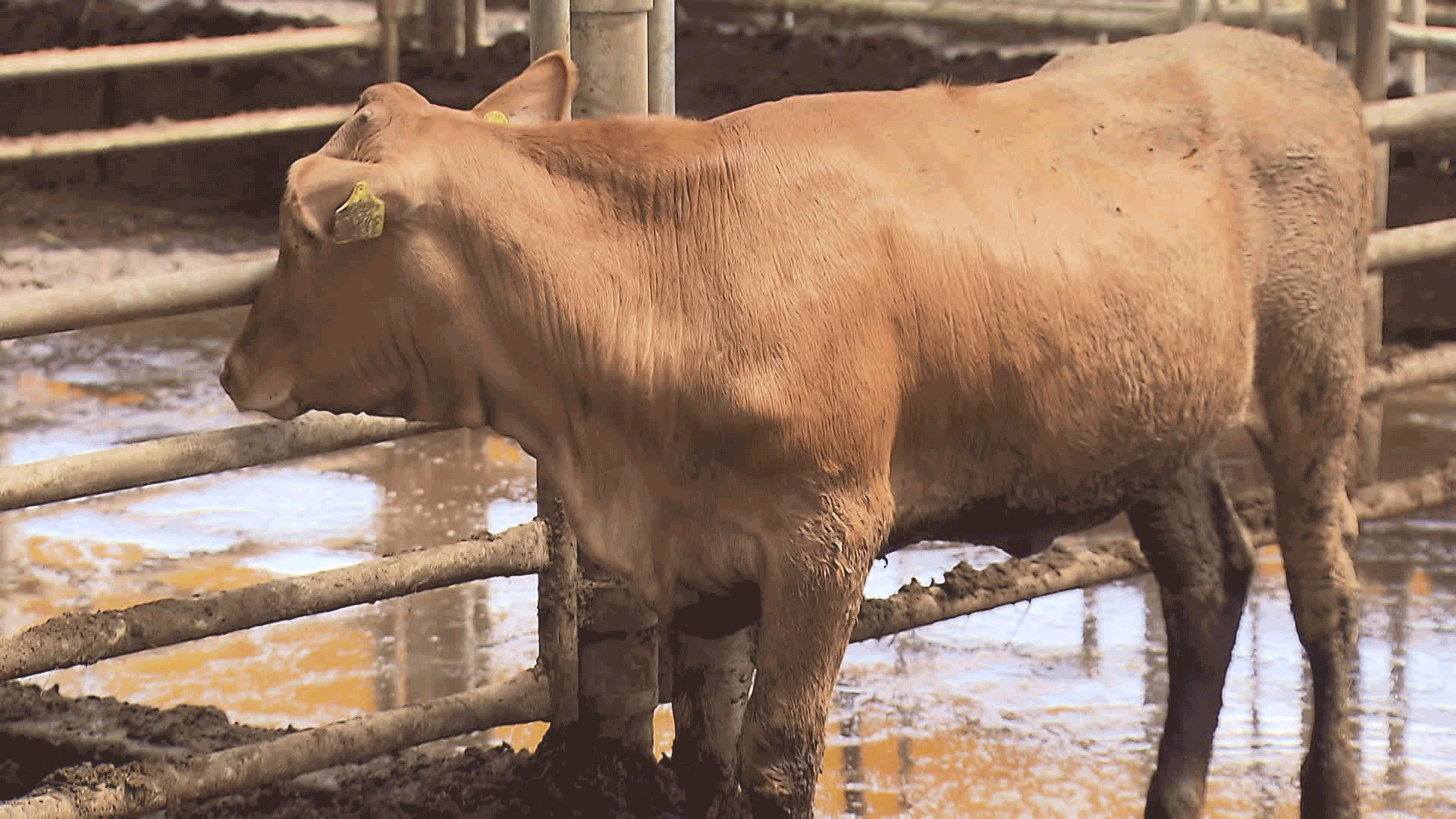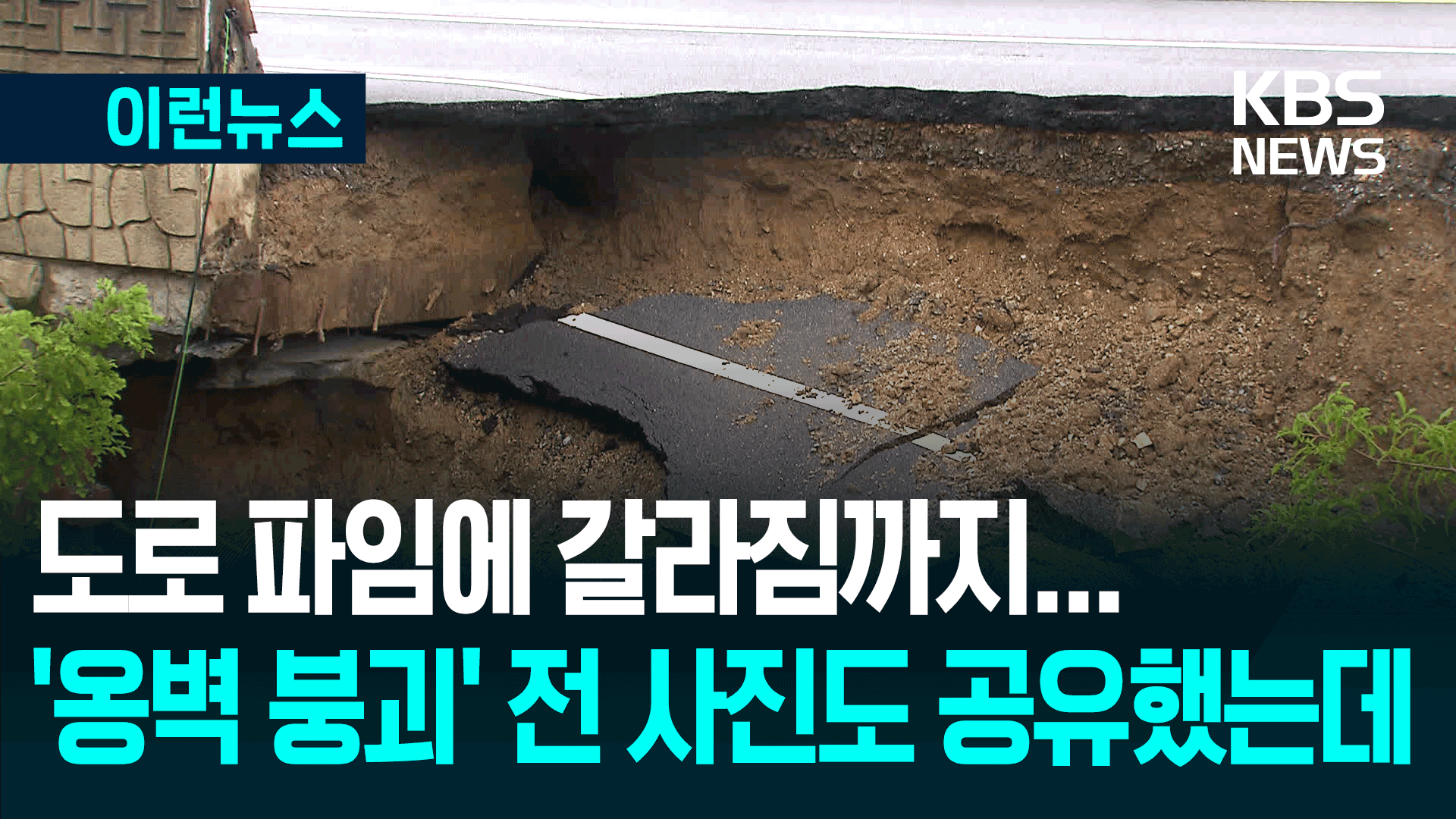[Anchor]
In addition to the direct damage caused by heavy rain, secondary damage is rapidly increasing.
Livestock farms are seeing mass deaths of animals, and greenhouse farmers are now worried about potential outbreaks of pests and diseases.
Reporter Seong Yong-hee has the details.
[Report]
This livestock barn was submerged up to the roof due to the torrential rain.
Inside the pens, mud and waste are still piled high.
Cows that lost their shelter are standing around in confusion.
With their feed either washed away or soaked, they haven’t eaten properly for days.
Out of 250 cows, 150 have drowned, and now more than 10 of the remaining ones are dying each day.
[Kim Moon-han/Livestock Farmer: “Their legs are all injured and infected. We need to clean the floors and disinfect, but there just aren’t enough workers.”]
The greenhouse where strawberries used to grow is now filled with nothing but despair.
Seedlings have been overturned and buried in the soil, creating a scene of chaos.
Even those that appear relatively intact are withering, as the power is out and nutrient supply systems are down.
This year’s harvest has been ruined, leaving farmers with no clear way forward.
[Kim Kwang-seop/Strawberry Farmer: “It might actually be better to rebuild the facility from scratch. We have to remove all the soil, clean it out, and start over. It’s incredibly frustrating.”]
With signs of pests and diseases beginning to emerge, emergency pest control is now underway.
[Kim Soo-yeon/Strawberry Farmer: “Because the ground is still wet, we’re spraying pesticides every morning and evening, at three-day intervals.”]
The provisional damage estimate from the heavy rain in the Chungcheongnam-do region has already surpassed 240 billion won.
As secondary damage grows, there are growing concerns that the total damage will escalate even further.
This is KBS News, Seong Yong-hee.
In addition to the direct damage caused by heavy rain, secondary damage is rapidly increasing.
Livestock farms are seeing mass deaths of animals, and greenhouse farmers are now worried about potential outbreaks of pests and diseases.
Reporter Seong Yong-hee has the details.
[Report]
This livestock barn was submerged up to the roof due to the torrential rain.
Inside the pens, mud and waste are still piled high.
Cows that lost their shelter are standing around in confusion.
With their feed either washed away or soaked, they haven’t eaten properly for days.
Out of 250 cows, 150 have drowned, and now more than 10 of the remaining ones are dying each day.
[Kim Moon-han/Livestock Farmer: “Their legs are all injured and infected. We need to clean the floors and disinfect, but there just aren’t enough workers.”]
The greenhouse where strawberries used to grow is now filled with nothing but despair.
Seedlings have been overturned and buried in the soil, creating a scene of chaos.
Even those that appear relatively intact are withering, as the power is out and nutrient supply systems are down.
This year’s harvest has been ruined, leaving farmers with no clear way forward.
[Kim Kwang-seop/Strawberry Farmer: “It might actually be better to rebuild the facility from scratch. We have to remove all the soil, clean it out, and start over. It’s incredibly frustrating.”]
With signs of pests and diseases beginning to emerge, emergency pest control is now underway.
[Kim Soo-yeon/Strawberry Farmer: “Because the ground is still wet, we’re spraying pesticides every morning and evening, at three-day intervals.”]
The provisional damage estimate from the heavy rain in the Chungcheongnam-do region has already surpassed 240 billion won.
As secondary damage grows, there are growing concerns that the total damage will escalate even further.
This is KBS News, Seong Yong-hee.
■ 제보하기
▷ 카카오톡 : 'KBS제보' 검색, 채널 추가
▷ 전화 : 02-781-1234, 4444
▷ 이메일 : kbs1234@kbs.co.kr
▷ 유튜브, 네이버, 카카오에서도 KBS뉴스를 구독해주세요!
- Damage after torrential rain
-
- 입력 2025-07-22 22:47:35

[Anchor]
In addition to the direct damage caused by heavy rain, secondary damage is rapidly increasing.
Livestock farms are seeing mass deaths of animals, and greenhouse farmers are now worried about potential outbreaks of pests and diseases.
Reporter Seong Yong-hee has the details.
[Report]
This livestock barn was submerged up to the roof due to the torrential rain.
Inside the pens, mud and waste are still piled high.
Cows that lost their shelter are standing around in confusion.
With their feed either washed away or soaked, they haven’t eaten properly for days.
Out of 250 cows, 150 have drowned, and now more than 10 of the remaining ones are dying each day.
[Kim Moon-han/Livestock Farmer: “Their legs are all injured and infected. We need to clean the floors and disinfect, but there just aren’t enough workers.”]
The greenhouse where strawberries used to grow is now filled with nothing but despair.
Seedlings have been overturned and buried in the soil, creating a scene of chaos.
Even those that appear relatively intact are withering, as the power is out and nutrient supply systems are down.
This year’s harvest has been ruined, leaving farmers with no clear way forward.
[Kim Kwang-seop/Strawberry Farmer: “It might actually be better to rebuild the facility from scratch. We have to remove all the soil, clean it out, and start over. It’s incredibly frustrating.”]
With signs of pests and diseases beginning to emerge, emergency pest control is now underway.
[Kim Soo-yeon/Strawberry Farmer: “Because the ground is still wet, we’re spraying pesticides every morning and evening, at three-day intervals.”]
The provisional damage estimate from the heavy rain in the Chungcheongnam-do region has already surpassed 240 billion won.
As secondary damage grows, there are growing concerns that the total damage will escalate even further.
This is KBS News, Seong Yong-hee.
In addition to the direct damage caused by heavy rain, secondary damage is rapidly increasing.
Livestock farms are seeing mass deaths of animals, and greenhouse farmers are now worried about potential outbreaks of pests and diseases.
Reporter Seong Yong-hee has the details.
[Report]
This livestock barn was submerged up to the roof due to the torrential rain.
Inside the pens, mud and waste are still piled high.
Cows that lost their shelter are standing around in confusion.
With their feed either washed away or soaked, they haven’t eaten properly for days.
Out of 250 cows, 150 have drowned, and now more than 10 of the remaining ones are dying each day.
[Kim Moon-han/Livestock Farmer: “Their legs are all injured and infected. We need to clean the floors and disinfect, but there just aren’t enough workers.”]
The greenhouse where strawberries used to grow is now filled with nothing but despair.
Seedlings have been overturned and buried in the soil, creating a scene of chaos.
Even those that appear relatively intact are withering, as the power is out and nutrient supply systems are down.
This year’s harvest has been ruined, leaving farmers with no clear way forward.
[Kim Kwang-seop/Strawberry Farmer: “It might actually be better to rebuild the facility from scratch. We have to remove all the soil, clean it out, and start over. It’s incredibly frustrating.”]
With signs of pests and diseases beginning to emerge, emergency pest control is now underway.
[Kim Soo-yeon/Strawberry Farmer: “Because the ground is still wet, we’re spraying pesticides every morning and evening, at three-day intervals.”]
The provisional damage estimate from the heavy rain in the Chungcheongnam-do region has already surpassed 240 billion won.
As secondary damage grows, there are growing concerns that the total damage will escalate even further.
This is KBS News, Seong Yong-hee.
-
-

성용희 기자 heestory@kbs.co.kr
성용희 기자의 기사 모음
-
이 기사가 좋으셨다면
-
좋아요
0
-
응원해요
0
-
후속 원해요
0













![[단독] “국방부, 해병대 수사단 해체 계획”…수사 압박용?](/data/news/2025/07/22/20250722_SCBKsc.png)

이 기사에 대한 의견을 남겨주세요.